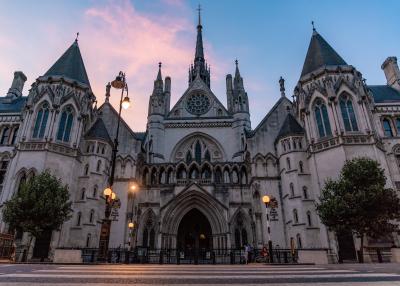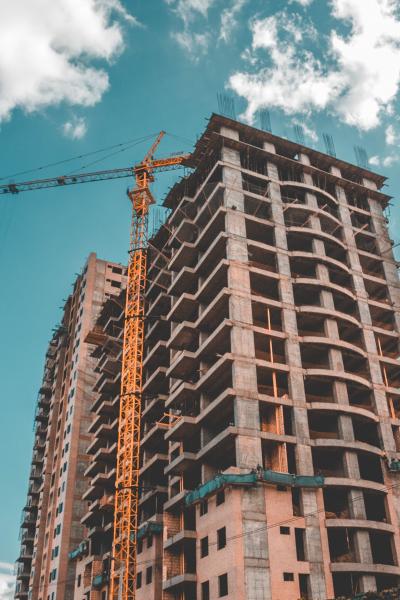The Building Safety Bill: better redress for homeowners? Part 2
Philip Britton LLB BCL is a Former Visiting Professor and Director, Centre of Construction Law and Dispute Resolution, King’s College London; former Senior Fellow (Melbourne Law Masters); co-author with Matthew Bell of Residential Construction Law (Hart Publishing, 2021)
Posted:
Time to read:
When enhancing rights is not enough
The first post considered critically changes added to the Building Safety Bill (BSB) which increase the ‘rights of action’ available to those suffering from construction defects in England & Wales. However, extending rights does nothing to reduce the structural obstacles to asserting any rights which are intrinsic to being a claimant in court. These impact especially heavily on housing defect claims against developers, builders and others, as two examples below illustrate. However, a BSB extension of limitation periods will make a modest but positive difference.
How is a homeowner disadvantaged?
A homeowner who discovers non-compliant housing defects may be able to claim under a third-party warranty, like NHBC Buildmark. However, the period of cover and its scope, as well as the policy’s limits on the insurer’s liability, will often leave losses uncompensated, notably ‘consequential’ loss of income or of capital value (see some issues discussed here). For these, our homeowner may look to (one or more of) the developer, main contractor or construction professional(s). But this is often an unequal contest: the claimant may be a first-time buyer, or have no expertise in the technical or legal side of construction. By contrast, a target defendant is almost always ‘a repeat player’ and by definition an insider. Further, the law offers no guarantee that those responsible in fact or law will stay in business and have assets (or insurance cover) to satisfy an eventual judgment.

Free to use under the Unsplash License
If an initial informal approach produces no acceptable solution, the homeowner needs a clear and accurate assessment of the possible outcomes if this ‘proto-dispute’ went to court. They need to grasp the relationship between what might be gained and what must be risked to achieve it (money – including having to pay at least part of the defendant’s litigation costs if the action is unsuccessful; and time – including delay in resolving the problem). To reach this understanding, our homeowner usually needs – but may have no clear route to find – skilled and appropriately experienced forensic and legal advice: at minimum, a building surveyor and solicitor. By contrast, any defendant will usually have easier access to professional advice, perhaps even in-house; if they have PI cover, their insurer will defend a possible claim.
A claimant within a multi-unit development may face an additional obstacle: the need to mobilise other unit owners, adopting appropriate communal decision-making and funding structures. Standard leases may give no right to inspect ‘the common parts’ of the building (its exterior for cladding, or its enclosed interior ducts and services for firestopping). These are in the landlord’s occupation, often via managing agents (also making access for rectification problematic, if residents want to organise the work). Assembling evidence of actionable defects may be an uphill and costly task, let alone working out (with no guaranteed access to construction documentation) precisely what went wrong and who was responsible – as the cases below show.
How does English civil procedure impact on homeowners?
Having a ‘right of action’ may get a claimant into court, but still requires adequate evidence of a legal wrong by one or more defendants and a causal link to a form of actionable harm, quantified in money terms. In our field, the Pre-Action Protocol (PAP) on the Construction and Engineering Disputes encourages a ‘cards on the table’ approach. Before ‘issuing proceedings’ in court, this ‘first legal gate’ of the justice system requires an exchange in writing between the parties of key aspects of their respective cases. Further, the PAP encourages them to meet: to discuss, for example, the possibility of ADR (mediation, arbitration, adjudication or another form of resolution) and disclosure of documents. This rightly discourages unnecessary litigation, or insubstantial claims, and may lead to an agreed outcome. But like many recent innovations, it ‘front-loads’ the procedure, requiring expenditure and resources from all parties at a relatively early stage.

Free to use under the Unsplash License
Parties can always agree a form of ADR – in July 2021 the Civil Justice Council encouraged English courts to require them to attempt this – but no form of ADR is yet imposed for disputes between a homeowner and a ‘builder’ (meant generically). Statutory adjudication is automatically available only between parties to a ‘construction contract’ (as defined), but this includes a ‘residential occupier exception’. Nor is there any low-cost, informal tribunal available, reducing the risks of being a claimant; on the planned New Homes Ombudsman, see ‘The New Homes Quality Code for England: A Progress Report’ (2021) 37 Construction Law Journal 416 and the latest news online.
Two recent Technology and Construction Court cladding cases
Once a case does get into court, a defendant has an armoury of procedural possibilities to protect their position: at the limit, asking a judge to strike the whole action out or give summary judgment. Each case here illustrates judges’ welcome reluctance to trigger these ‘nuclear options’, but also the level of factual and evidential detail required of claimants.
In Naylor v Roamquest Ltd, the NHBC was paying to rectify the exterior cladding and insulation of six blocks in Greenwich, but a group of unit owners started legal action against the developer/landlord and main contractor for the possible costs of rectifying other non-compliant defects which the main works might reveal, and any non-compliance of these works when complete. O’Farrell J held that a claim could not rest on hypothetical or assumed defects or on the absence of evidence from the defendants that there were no further defects; but the claimants should have time to correct the gaps in their case by further investigations (which they of course would have to fund). Nor would she, ahead of a trial, prevent them from claiming damages for diminution in the value of each claimant’s flat.
In Crest Nicholson Operations Ltd v Grafik Architects Ltd, the developer claimant was suing its architect and the NHBC’s Approved Inspector subsidiary BCS Ltd, arguing that both were at fault in permitting non-compliant cladding and render systems in a new-build residential tower. BCS asked the court to strike out the whole action, arguing that the claim gave inadequate factual detail of the alleged breaches of duty. Judge Sarah Watson agreed that parts of the claim needed more detail; she also criticised the defendant’s refusal to supply information requested, until the claimant’s expert served his report. She noted that the court expects cooperation and exchange of information before proceedings are issued, but in this case (as many), limitation concerns led to the claim form being issued before this could happen. The judgment required the claimant to provide the necessary extra detail, but BCS should have used CPR Part 18 to ask for this, rather than going straight for a request to strike out.

Photo by Adrian Cogua on Unsplash
Limitation changes for building defect claims: what help?
The BSB (clause 126) extends the standard limitation period within which legal action must formally be started under the DPA s 1 (or the Building Act 1984 s 38 – see previous post ): from six years since completion of construction to 15 (a longer period than for almost all other civil claims, five years longer than the standard period of insurance cover for serious categories of construction defect under most third-party warranties). In relation to the pre-BSB text of the DPA (but not the Building Act s 38), this change is intended to have retrospective effect: if the Bill is adopted in mid-2022, work completed from mid-2007 up to mid-2016 will theoretically become subject to DPA claims. Any already determined (by court judgment or formal settlement) cannot be re-opened, so one already struck out on limitation grounds – like many cladding cases (discussed here) – cannot be revived. The retrospective aspect of this reform may violate Article 1 of the First Protocol (A1P1) of the European Human Rights Convention: some claims which would have been timed out under the ‘old’ six-year rules may not, after all, be able to be launched now (see discussion here).
This change will enable DPA claims in relation to the construction (but not renovation) of many additional dwellings, first completed within an additional past nine years; but it replaces one fixed-term limitation period with another. Thoughtful opinion – like the Law Commission in 2001 – prefers a shorter fixed period for all civil claims, starting only when the claimant had (or would have had, had they acted reasonably) the necessary degree of knowledge of the possibility of legal action (‘discoverability’); this would be subject to a final fixed longstop, measured from ‘accrual of the cause of action’. Knowledge of the specific fire dangers of external cladding and insulation in tower blocks is now almost universal, but not even the Grenfell Tower Inquiry has yet made clear – as court action would – exactly which party bears what share of legal liability for the tragedy. For less high-profile types of dwelling defect, it often takes time for a homeowner fully to understand the significance of what is present in the building and to consider redress: even the extended 15-year period may unfairly exclude some claimants. Common law claims in contract or tort retain the basic six-year period (with statutory exceptions).
--
How to cite this blogpost (Harvard style):
Britton, P. (2021) The Building Safety Bill: better redress for homeowners? Part 2. Available at: https://www.law.ox.ac.uk/housing-after-grenfell/blog/2021/12/building-safety-bill-better-redress-homeowners-part-2 (Accessed: [date])
Share:
